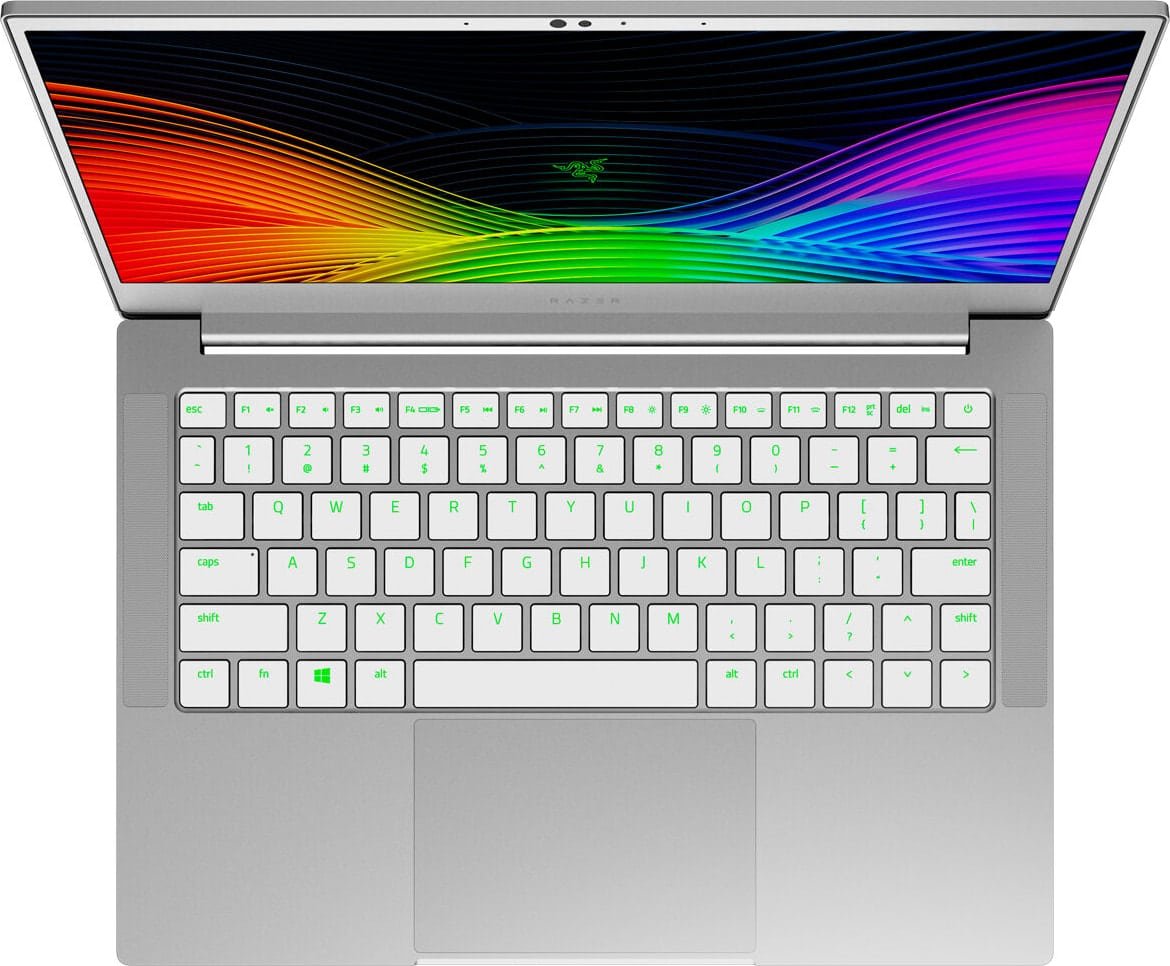Specifications
- CPU: 1.3GHz Intel Core i7-1065G7 (quad-core, 8MB Intel Smart Cache, up to 3.9GHz with Turbo Boost)
- Graphics: Intel Iris Plus (integrated)
- RAM: 16GB LPDDR4 (3733MHz)
- Screen: 13.3-inch 1080p IPS
- Storage: 256GB NVMe SSD
- Optical drive: N/A
- Ports: 2x USB-A 3.0, 1x USB-C 3.0, 1x USB-C 3.1 with Thunderbolt 3, combi audio jack
- Connectivity: Intel Wireless-AC 9560 (IEEE 802.11a/b/g/n/ac), Bluetooth 5.0
- Camera: HD 1080p IR Webcam
- Weight: 2.98 pounds (1.35 kg)
- Size: 0.6 x 12.0 x 8.3 inches (1.5 x 30.5 x 21 cm; W x D x H)
Design
This Razer Blade Stealth 13 (2019) is pleasingly lightweight, the lack of a fanatical GPU working in its favour within the portability department. The chassis is compact, although the lower bezel is sort of chunky, giving it an outdated appearance. That bezel is additionally fatter along the top edge to allow for the webcam. It fits easily in a bag and doesn’t weigh too much, but we’ve seen smaller notebooks.
The entire outer chassis is solid metal, precision-machined from aluminum, leading to excellent durability.The trackpad is perfectly sized, allowing a generous amount of finger travel, and therefore the speakers are concealed under thin mesh strips either side of the keyboard.
Keyboard

Keyboard feels good to use for both typing and gaming, with nice large keys despite the small chassis. The RGB lighting effects can be customised using the pre-installed Razer software, and looks bright and colorful in motion.
Performance
The Intel Iris Plus graphics did great in graphical benchmarks, and rendering tests showed performance on part with other 10th-gen Intel notebooks. While the SSD could be quite small, it transfers files at tremendous speeds. Games load quickly and copying files from memory device is orders of magnitude faster than with older hard drives.
Looking at games, the performance was the most effective we’ve seen from an ultrabook without a discrete graphics card. No, ultra settings aren’t an attainable goal in most games, but dropping the settings to Medium or Low makes almost everything but the most demanding titles playable at 1080p.
Battery
The Mercury White model of the Blade Stealth 13 (2019) has a powerful battery life, managing to comfortably outstrip the other models of the Razer Blade Stealth 13 due to its lack of a discrete GPU.
In video playback with a balanced power plan, the battery performed excellently, lasting for nearly ten hours. Running the Razer Blade Stealth 13 on battery saver mode guarantees all-day performance off one charge if you’re using it for everyday work and web browsing. Games do drain the battery tons faster, but this Ultrabook can definitely handle an honest four or five hours of Fortnite before it needs charging.
Price
The model we’re reviewing here is priced at $1,499 (£1,499, AUS$2,799), and it’s the most recent edition of the Razer Blade Stealth 13. It’s certainly on the expensive side, as is usually the case with Razer’s products; there’s a particular premium attached to the brand, which does guarantee excellent design quality.
Should you buy it?
We will not recommend you Razer Blade Stealth 13 if you are looking for something cheap and you want lots of storage because this laptop comes with only 256GB drive. But if you are looking for a laptop with durability, all day battery life and you enjoy quiet, this is the one for you.
